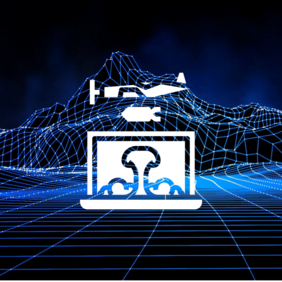
Information warfare is a growing threat, particularly for western democracies, to which all social players are exposed. In this section, we identify the measures that state players in particular need to take to determine their role and responsibilities and to highlight priority areas of action.
The issue of information warfare has a long tradition, both internationally and in Switzerland. In the late 1990s to around 2010, the umbrella term covered all relevant issues, including warfare in cyberspace, propaganda, disinformation and psychological warfare. The issue was addressed both as part of the Strategic Management Exercise 97 (SFÜ) and conceptually within the Swiss Army as part of the Information Operations Conception Study (KS IO). The current use of the term increasingly refers to the influencing of public opinion using semantic methods in which technological aspects are one of the driving forces for the implementation of these operations.
In the 1990s, various organisations and researchers raised awareness of possible developments relating to the use of digital technology for the production and dissemination of information manipulated in various ways. However, this only became relevant and real with the emergence of social media and the wider availability of machine/deep learning technologies at affordable prices.
The use of artificial intelligence algorithms, automation, and large data volumes on the web and in social media is changing the scope, range and precision of how computer-based propaganda campaigns can be used to manipulate public opinion. Today it is possible to produce content automatically or semi-automatically, to convert it into text, language and images and to make it available to a broad and target-group-specific mass of people in a short space of time and without significant costs. The nature of social media makes it highly susceptible to attacks.
Filter bubbles and echo chambers can be created and enhanced; memes, photos and videos can be used for the dissemination of information without the ability to verify the source; communities can be attacked by identifying vulnerable personal profiles or influential network nodes.
Social media is being manipulated by governments and political parties. According to a study by the Oxford Internet Institute, there is evidence of organised social media manipulation campaigns by cyber-armies or political parties for 70 countries in 2019 compared to 48 countries in 2018 and 28 in 2017. In authoritarian states, social media manipulation is used as an instrument to control the population. Democratic states are the target of influencing operations which are carried out by a handful of players, including (according to the evidence) China, India, Iran, Pakistan, Russia, Saudi Arabia and Venezuela. The size of the cyber-army in China is currently estimated at 300,000 to 2 million people. Cyber-armies often also work with the private sector, civil society organisations, internet subcultures, youth groups, hacker groups, fringe movements, social media influencers and volunteers who support their cause ideologically.
A wide range of techniques are available for implementing influencing campaigns, including disinformation, social hacking, fraudulent identities, bots and trolling. One thing all these techniques have in common is that they are used to influence political processes (e.g. elections) or even spark uprisings and revolutions. The destabilising potential of this type of warfare is based on a deeper understanding of human decision-making processes and the dynamics of mass phenomena. These aspects can also be simulated increasingly easily thanks to new technology and algorithms.
Operations that attempt to influence at the state level can change public opinion in a country in favour of the attacker. This means that democracies where political decision-making processes are firmly embedded in public opinion are particularly susceptible to this kind of attack.
Influencing operations are attractive to attackers for various reasons:
On the other hand, it is difficult to determine the efficiency and impact of influencing operations. They also run the risk of slipping out of control for attackers. It can nonetheless be assumed that changes in public opinion were achieved in several recent events, in particular the elections in the USA, UK and France. The question remains as to whether these changes ultimately proved decisive.
Another unanswered question is whether Switzerland has already been the target of sophisticated influencing operations. There are indications that they have taken place on certain political issues (e.g. referendum on Billag, 5G controversy).
The position of the Swiss government is that the active use of manipulated information to achieve political objectives is not an appropriate tool for a democratic state. This is why it is extremely important that the following measures are implemented in response to the threat from information warfare (also see the EU Action Plan):
Basic rights, such as freedom of expression, are generally regarded as fundamental to our society and are firmly established in it – this means restrictions on access to information are only justified as a last resort in very serious cases of a criminal nature. This is why a prompt response in the form of information is also extremely important here.
Explanation of some common forms of information warfare.